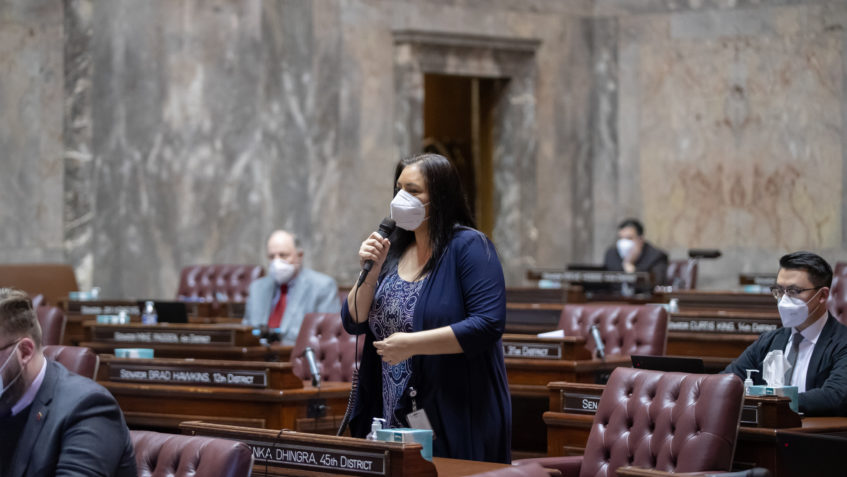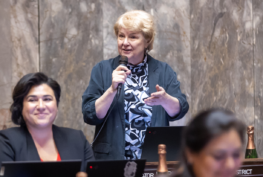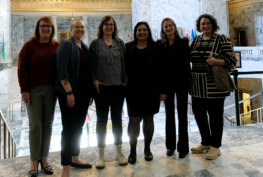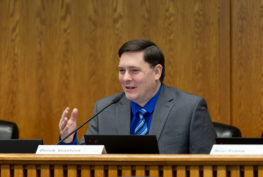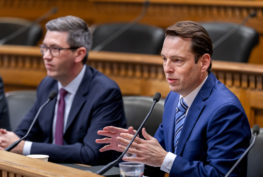OLYMPIA – Washington will extend its public-health approach to substance use disorder by establishing a temporary new legal framework the possession of controlled substances and providing nearly $90 million to significantly expand treatment infrastructure, under a bill passed today by the Legislature.
In a Feb. 25 decision in the case of State v. Blake, the Washington State Supreme Court struck down the state statute that made possession of controlled substances a class C felony, removing all state criminal penalties for possession.
SB 5476, sponsored by Sen. Manka Dhingra (D-Redmond), reduces the penalty to a simple misdemeanor and mandates that jurisdictions provide treatment options.
“This bill is not an ideal solution, but it is a thoughtful step forward,” said Dhingra. “It achieves three important goals. First, it establishes a statewide approach to addressing drug possession. Second, it prioritizes and funds treatment for substance use disorder. And third, it provides us the time to come up with a public health approach to substance-use disorder that relies on best practices and access to treatment that takes into account equity.”
The first two times a person is arrested for possession of a controlled substance, the bill requires that the person be diverted to a treatment program in lieu of being booked at the jail. On subsequent arrests, diversion is encouraged but not required. Without diversion, a simple misdemeanor carries a maximum penalty of 90 days in jail, a fine of up to $1000, or both.
This framework will be in place for two years, during which a Substance Use Recovery Services Advisory Committee made up of experts and affected people will review the legal system response and recommend a substance use recovery plan. The advisory committee’s interim report is due Dec. 1, 2021, and its final report Dec. 1, 2022.
The bill appropriates $88.5 million for behavioral health treatment over the next two years. Major investments include:
- $45 million to implement a statewide Recovery Navigator Program that will provide community-based treatment and long-term case management for people with substance use disorder;
- $12.5 million to establish a Homeless Outreach Stabilization Team Program; and
- $4.5 million to expand the successful therapeutic court model to municipal and district courts, which will have jurisdiction over controlled substance possession now that it has been made a misdemeanor.
Finally, the bill allows Washington courts to hire court commissioners to help resentence people who were convicted under the statute struck down by the Supreme Court.
Since establishing the state’s first treatment court for people with substance use disorder in 1994, Washington has been a national leader in treatment-focused approaches. Law Enforcement Assisted Diversion (LEAD), a program that connects people with services and treatment, began in 2011 in King County and has expanded to Snohomish, Thurston, Kitsap, Whatcom and Mason counties as well as several cities in Washington and dozens of jurisdictions around the country.
“For 27 years, Washington state has been transitioning our response to substance use disorder away from the failed policies of the war on drugs and toward a treatment-first, public-health approach,” said Dhingra. “This bill is a step in the right direction, but we have many more steps to take.”
In the past three years, the Legislature has consistently expanded infrastructure to support a treatment-first approach to substance use disorder, which includes behavioral health co-responder teams, assertive community teams, certified peer support, fire department CARES teams, crisis stabilization services, secure withdrawal management facilities, and supportive housing—work that continues this year with legislation on a statewide crisis response hotline and the distribution of opioid overdose reversal medication, as well as funding in the budget.
“We know from decades of experience that criminal penalties for substance use disorder do not help individuals recover,” Dhingra said. “They don’t help address people’s needs and don’t keep communities safe. What does help is providing people access to treatment when they are ready to engage that does not take them through law enforcement. Avenues for treatment must be available through multiple sources. That’s the system we have been building, and that’s the system we will continue to build in the future.”
The bill now goes to the governor for his signature.

